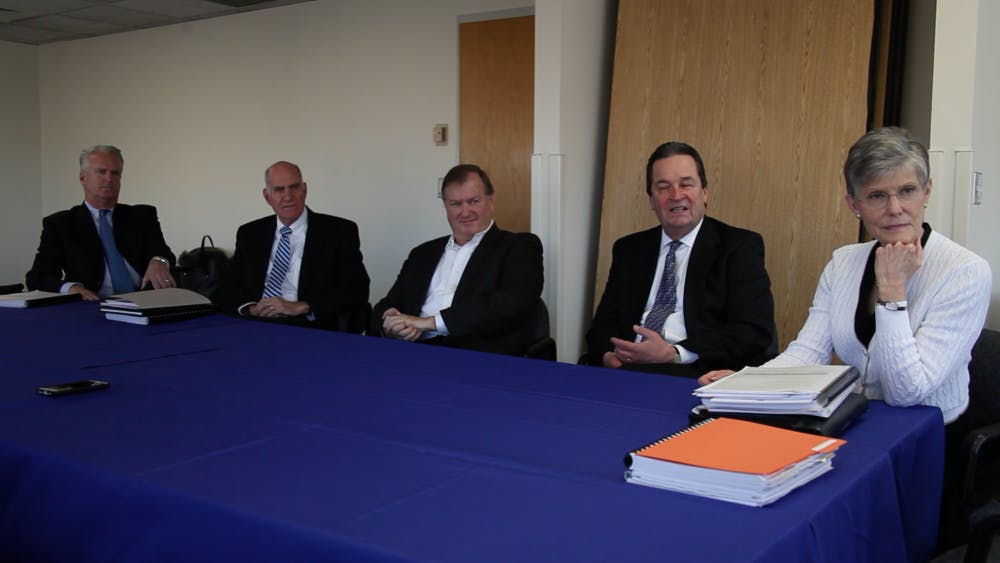This article originally appeared in The Eagle’s special edition on Oct. 21.
University administrators are in the process of developing a budget that will fund the school for 2017-2019 after its implementation this coming May. The new budget will likely include an increase in tuition, in addition to a focus on the Reinventing the Student Experience (RISE) initiative and meeting student demands for mental health services, according to Douglas Kudravetz, CFO, vice president and treasurer.
“The biggest challenge is always how do we keep tuition as low as possible,” Kudravetz said. “We know that we’re going to need to have a tuition increase of some sort just because of the additional tuition expenditures that come up every year, but our goal is to really manage that process, to keep it as low as possible, and that’s always a challenge.”
While Kudravetz didn’t mention a specific amount that tuition may increase by in the upcoming cycle, there was a 3.5 percent increase from the 2015-2016 academic year to the current academic year. The increase may be also be affected by external requirements placed on the University at the city and the nation levels, including new plans for family and medical leave and overtime salary guidelines, according to Kudravetz.
“The issue at American University, as you may know, is that we are a very tuition dependent institution,” Kudravetz said. “Ninety-five percent of our revenue comes from student tuition and fees, and we don’t have a lot of other revenue sources, so when we have a lot of increased costs, it is pretty hard not to have some sort of a tuition increase.”
The budget committee, appointed by President Neil Kerwin in September, includes faculty and staff, as well as one undergraduate representative, Student Government Comptroller Shannon McDermott, and one graduate student representative, Prajakta Diwan, the vice president of finance for the Graduate Leadership Council. The group had its first of many meetings with Kerwin on Sept. 23, beginning the process of determining how the University’s budget will be spent, according to Kudravetz.
From now until December, the committee will compile proposals from various sectors of the University, including all the deans of each of the schools, to come up with the budget formulation criteria that will then be recommended to the Board of Trustees, according to Kudravetz.
“As you can imagine, there’s always a lot more requests than there is enough money to pay for the requests, so it is a process of setting priorities,” Kudravetz said.
According to a timeline published by the University Budget Committee, once these proposals are finalized in January by the Committee, Kerwin will present the proposed budget to the Board of Trustees to review and vote on for approval.
According to Assistant Vice President of University Budget and Finance Resource Center
Nana An, the goal is to find a balance between considering financial constraints while also looking at ways to improve the University, especially at a time of campus expansion, development of new academic programs and an increasingly selective admissions rate.
“This is a balancing act, so, ‘How do you keep priorities between the cost side, tuition rate side, keeping the tuition rate as low as possible, and yet keep the momentum so the University is moving to the next level?’” An said.
Kudravetz said student input is also important, and encouraged groups to have their voices heard through their student representative on the budget committee. There will also be a town hall with students, faculty and staff that is expected to take place in the coming months where attendees can voice their concerns regarding the budget process, according to Kudravetz.
He also encouraged students to look online at the Budget Report from the President for the fiscal years 2016 and 2017 for a more transparent and comprehensive breakdown of how tuition money is spent.
“I would say [the 2015-2016 budget report] is probably the most transparent budget document of any university in the country,” Kudravetz said. “It talks about where the money comes from, where it’s spent, and it breaks it down by the different schools and colleges, and then in the back there are a number of charts and graphs that include things to be transparent about our tuition increases versus other universities’ rates.”
Aijah Raghnal is a sophomore in the College of Arts and Sciences and a member of the Community Action and Social Justice Coalition, an advocacy group on campus that supports a tuition freeze, a movement that is led by the student organization Education Not Debt. Raghnal said she hopes there will be transparency in the budget process and that there is a significant focus on financial aid.
“It would be good if students had more knowledge about the budget because it’s our future in the end,” Raghnal said. “If you leave the school with so much debt, you’ll feel its effects for a very long time, so what would be most beneficial for the student population is knowing exactly where our money is going.”





